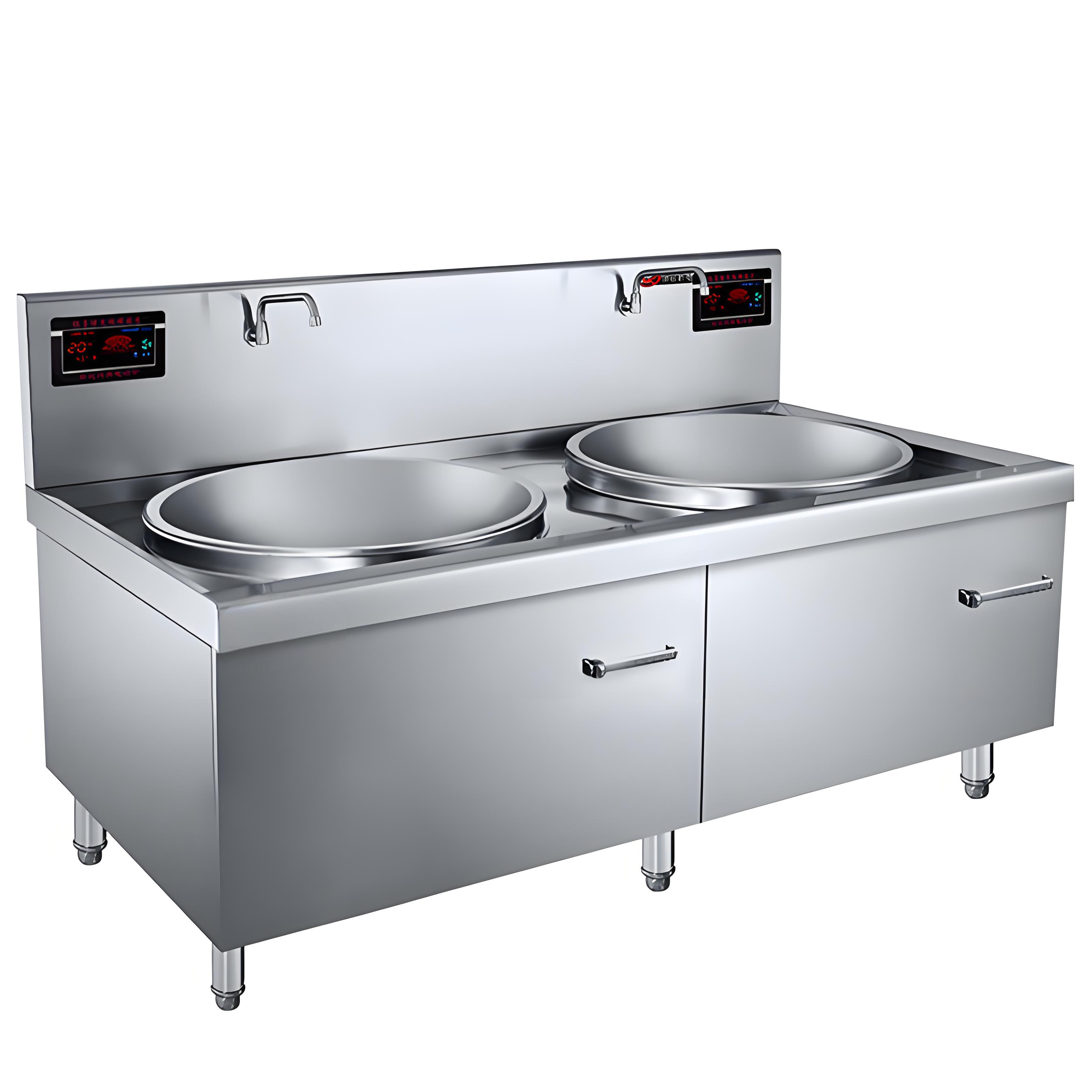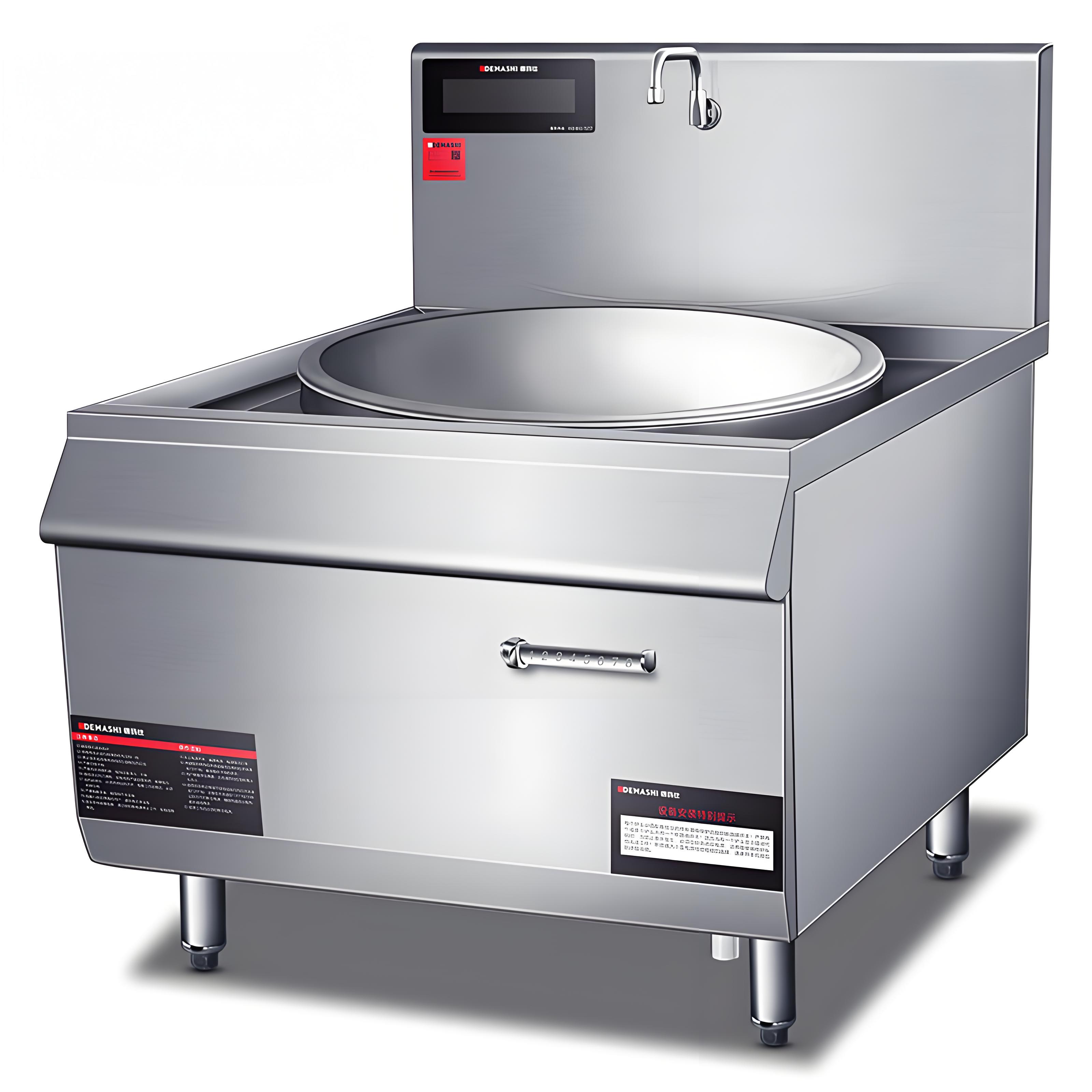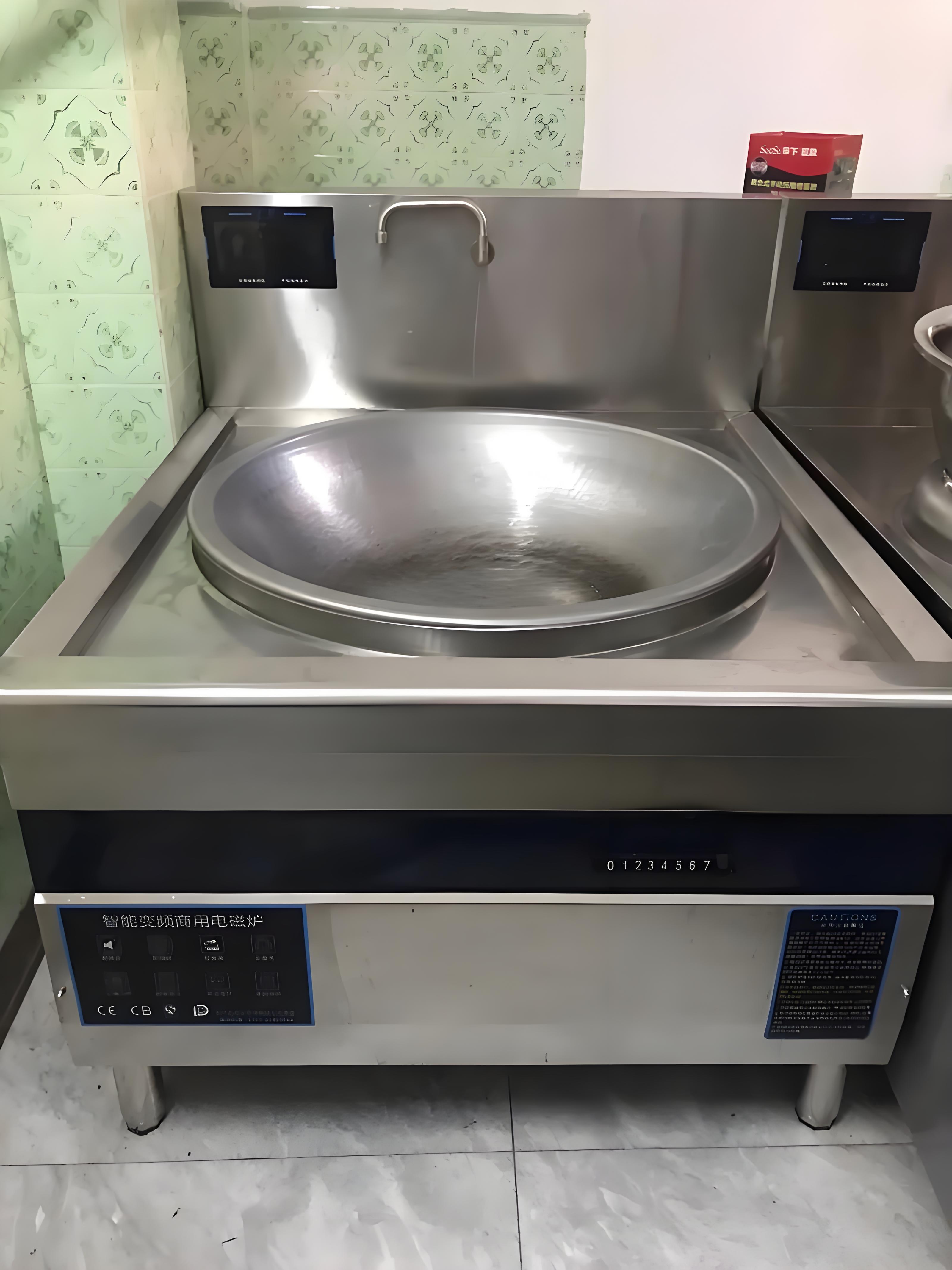Having been deeply involved in the catering industry for many years, I’m well aware of the significance of cost control in restaurant operations, among which energy consumption is a major aspect. Recently, quite a few restaurant owners have come to me asking, “Can commercial induction cookers save electricity in restaurants?” This question may seem simple at first glance, but it actually involves multiple facets. Today, from my own experience and professional perspective, I’ll have a thorough chat with you about it.
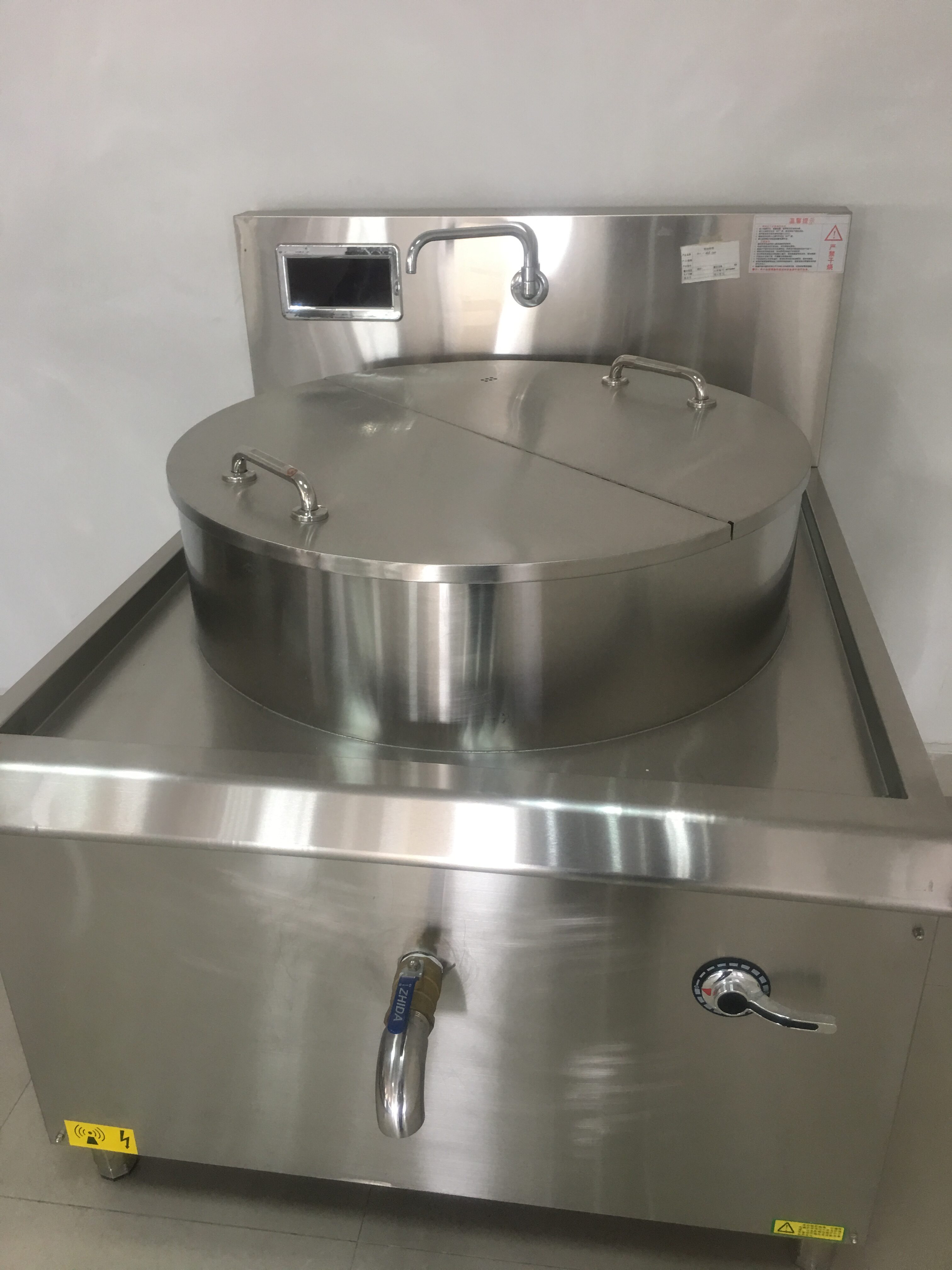
1. Working Principle and Energy Consumption Characteristics of Commercial Induction Cookers
To understand whether commercial induction cookers can save electricity, we first need to grasp their working principle. Commercial induction cookers are similar to the ones we use at home in principle. They utilize the principle of electromagnetic induction for heating. Inside the cooker, a coil generates an alternating magnetic field. When a ferrous pot or pan is placed on the cooktop, the bottom of the cookware cuts the alternating magnetic field lines, thereby inducing alternating currents (i.e., eddy currents) in the metal part at the bottom of the cookware. These eddy currents cause the iron molecules in the cookware to move rapidly and irregularly. The collisions and frictions between the molecules generate heat, enabling the cookware itself to heat up rapidly and be used for cooking food.
This heating method has several notable energy consumption characteristics. Firstly, it heats up quickly. Since it directly heats the cookware, the thermal efficiency is high. Unlike traditional gas stoves or resistance wire stoves, which lose a significant amount of heat to the surrounding environment. For example, to boil a pot of water, a commercial induction cooker may only take a few minutes, while a traditional stove might take more than ten minutes or even longer. Secondly, it has high thermal efficiency. Generally speaking, the thermal efficiency of commercial induction cookers can reach over 90%, while that of traditional gas stoves is around 50% – 60%, and that of resistance wire stoves is about 60% – 70%. This means that with the same energy input, a commercial induction cooker can generate more effective heat for cooking.
To present the energy consumption situation of different stoves more intuitively, I’ve compiled a simple table:
| Stove Type | Thermal Efficiency | Time Required to Boil a Pot of Water (Reference) | Energy Consumption Comparison (Taking Boiling a Pot of Water as an Example) |
|---|---|---|---|
| Commercial Induction Cooker | Over 90% | 3 – 5 minutes | Relatively low |
| Gas Stove | 50% – 60% | 8 – 12 minutes | Relatively high |
| Resistance Wire Stove | 60% – 70% | 7 – 10 minutes | Relatively high |
From the table, it can be seen that commercial induction cookers have obvious advantages in terms of thermal efficiency and heating speed, which lays a foundation for their electricity-saving potential.
2. Factors Affecting the Electricity-Saving Effect of Commercial Induction Cookers
Although commercial induction cookers inherently have the potential to save electricity, their actual electricity-saving effect can be influenced by various factors in practical use.
(1) Choice of Cookware
The choice of cookware has a significant impact on the electricity-saving effect of commercial induction cookers. The material of the cookware is crucial. Iron or stainless steel cookware is the best choice because these materials can better interact with the magnetic field of the induction cooker, generating efficient eddy current heating. If aluminum, copper, or glass cookware is used, their weak response to the magnetic field will result in poor heating efficiency, not only wasting energy but also potentially damaging the induction cooker.
The size of the cookware should also be appropriate. If the cookware is too small, most of the cooktop area will not be utilized, leading to energy waste. If the cookware is too large and exceeds the heating area of the cooktop, the edges of the cookware cannot be heated effectively, which will also affect the heating efficiency. Generally, the bottom diameter of the cookware should match the diameter of the induction cooker’s cooktop as closely as possible.
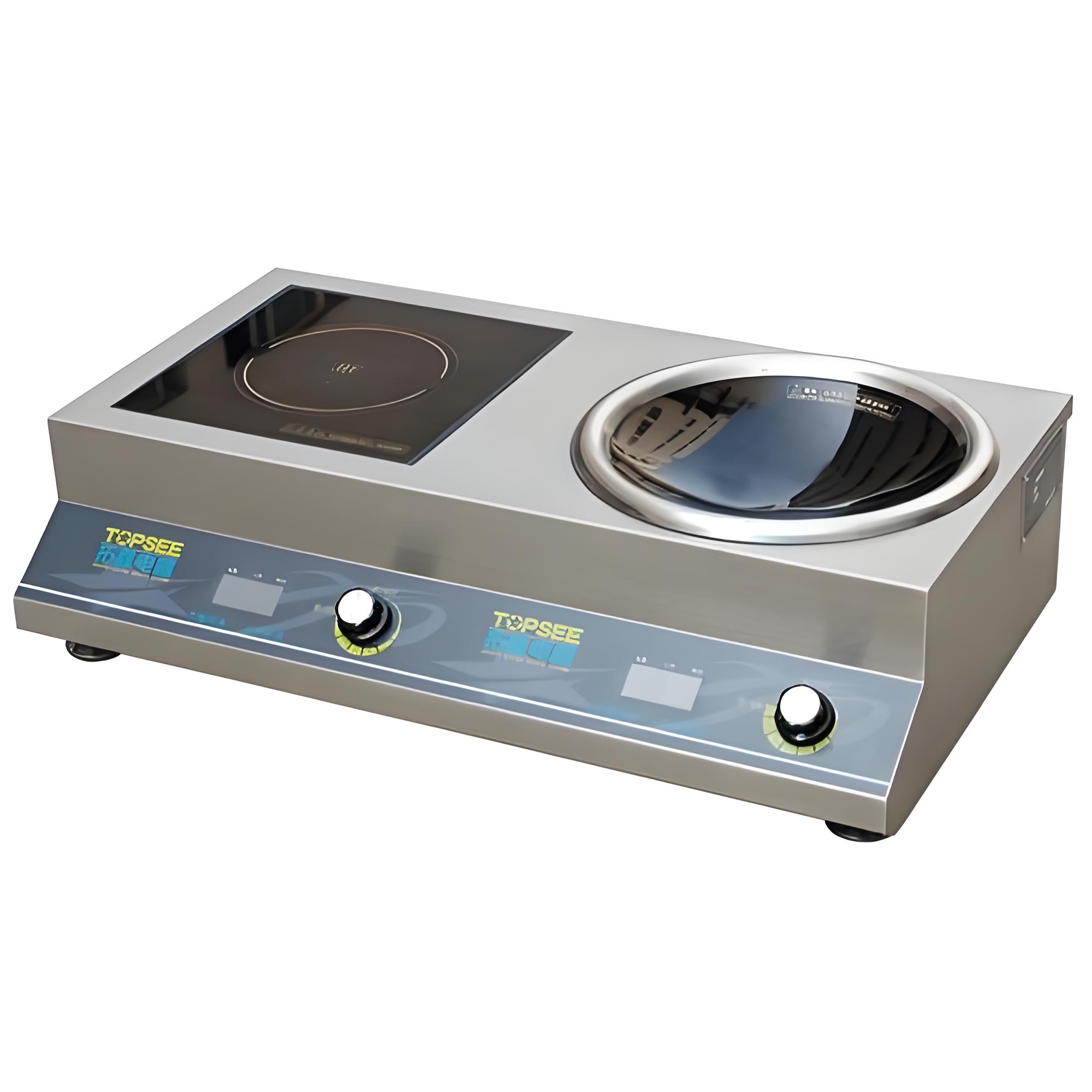
(2) Cooking Habits
The cooking habits of restaurant chefs also affect the electricity-saving effect of commercial induction cookers. Firepower adjustment is very important. Some chefs are used to turning the firepower to the maximum at the beginning and only reducing it when the food is almost cooked. This actually wastes energy. The correct approach is to adjust the firepower reasonably according to different stages of cooking. For example, when stir-frying vegetables at the initial stage, a high fire is needed for rapid heating. During the cooking process, the firepower can be appropriately reduced to maintain the temperature.
Control of cooking time is also crucial. Overcooking not only affects the taste and nutrition of the food but also wastes energy. Chefs should accurately control the cooking time according to the characteristics of the ingredients and the cooking requirements to avoid unnecessary energy consumption.
(3) Equipment Maintenance
The maintenance condition of commercial induction cookers also affects their electricity-saving effect. Regular cleaning is essential. During the use of the induction cooker, oil stains and food residues will accumulate on the cooktop, which can affect the distribution of the magnetic field and reduce the heating efficiency. It is recommended to wipe the cooktop with a clean damp cloth after the end of each business day and conduct a deep cleaning with a professional cleaner regularly.
Inspection of internal components is also important. If components such as the coil and capacitor inside the induction cooker malfunction or age, it will affect its normal operation and increase energy consumption. Restaurants should regularly invite professionals to maintain and inspect the induction cooker to promptly identify and solve problems.
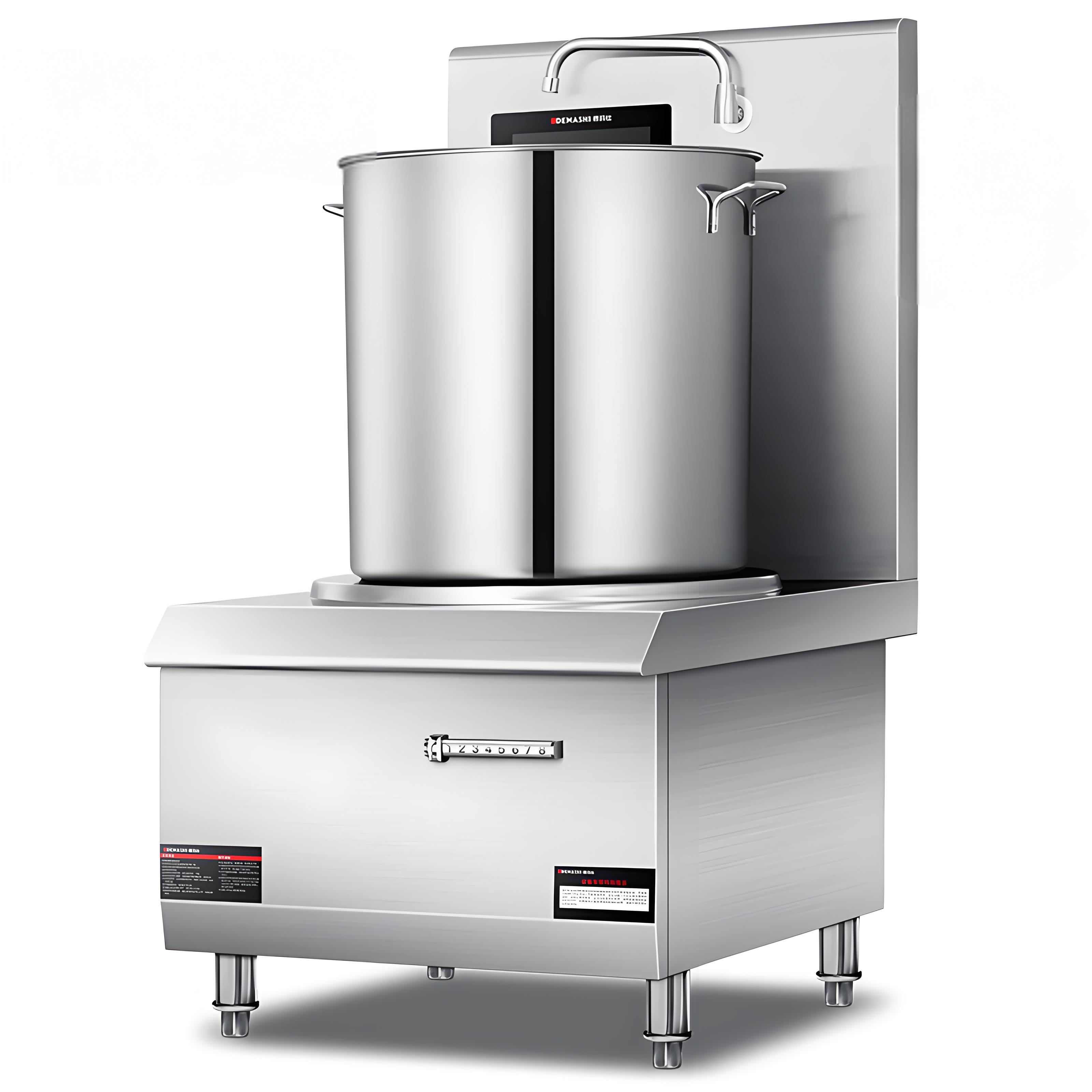
3. Comparison of Electricity-Saving Effects between Commercial Induction Cookers and Other Stoves
To have a clearer understanding of the electricity-saving effect of commercial induction cookers, let’s compare them with other common restaurant stoves.
(1) Comparison with Gas Stoves
Gas stoves are widely used in restaurants. Their advantages include flexible firepower adjustment, which is suitable for various cooking methods. However, from the perspective of electricity-saving (in a broader sense of energy-saving, considering the cost of the energy source), gas stoves have obvious disadvantages. In terms of energy prices, with the rise in natural gas prices, the operating costs of gas stoves are also increasing. In contrast, commercial induction cookers use electricity. In some regions, electricity prices are relatively stable, and with the development of renewable energy, the cost of electricity may further decrease.
In terms of thermal efficiency, as mentioned earlier, gas stoves have low thermal efficiency, and a large amount of heat is lost to the air with the flue gas. Commercial induction cookers, on the other hand, have high thermal efficiency and higher energy utilization. In addition, gas stoves also have certain safety hazards during use, such as gas leaks and fires, while commercial induction cookers are relatively safer without open flames, reducing the risk of fires.
(2) Comparison with Resistance Wire Stoves
Resistance wire stoves are also commonly used in restaurants. Their advantages include a simple structure and relatively low price. However, in terms of electricity-saving, resistance wire stoves are not as good as commercial induction cookers. In terms of heating speed, resistance wire stoves heat up slowly and take a long time to reach the required cooking temperature, which increases energy consumption. Moreover, as the resistance wire in resistance wire stoves gradually ages during use, its resistance increases, and the heating efficiency decreases, further increasing energy consumption.
In terms of maintenance costs, the resistance wire in resistance wire stoves is prone to damage and needs to be replaced regularly, increasing maintenance costs. In contrast, commercial induction cookers have a relatively long service life and lower maintenance costs.
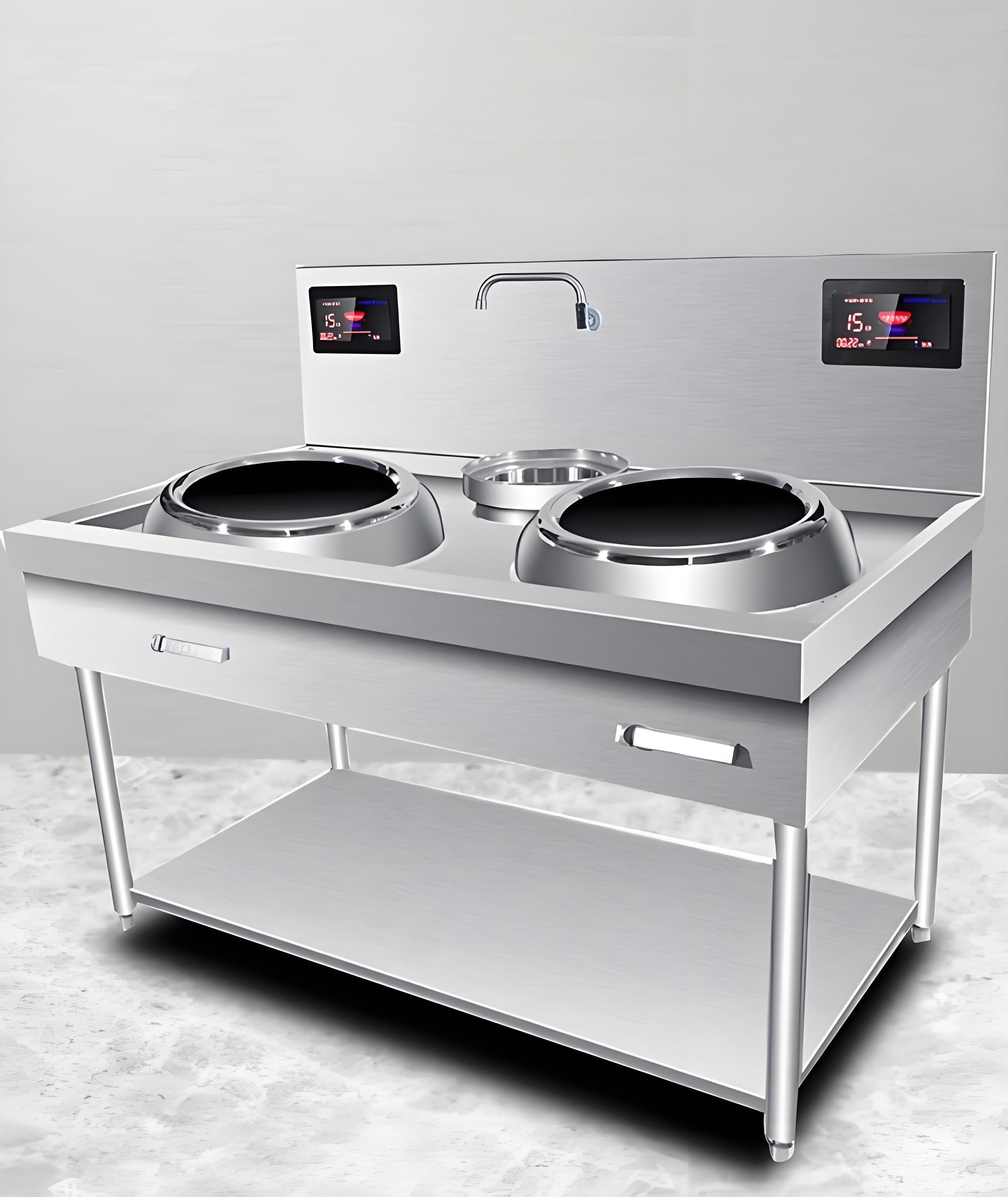
4. Practical Cases of Electricity-Saving in Restaurants Using Commercial Induction Cookers
To illustrate the electricity-saving effect of commercial induction cookers in restaurants more直观ly, I’ll share a few practical cases.
(1) Case of a Chinese Restaurant
This Chinese restaurant originally used gas stoves, and the monthly gas bill was around 8,000 yuan. Later, the restaurant owner decided to switch to commercial induction cookers. After a period of use, it was found that the monthly electricity bill was about 5,000 yuan, saving about 3,000 yuan compared to before. Moreover, the kitchen environment of the restaurant has also improved. There is no waste gas and odor produced by gas combustion, and the working environment for chefs is more comfortable.
(2) Case of a Fast-Food Restaurant
This fast-food restaurant mainly serves stir-fried dishes and clay pot rice. It previously used resistance wire stoves, and the monthly electricity bill was around 6,000 yuan. After switching to commercial induction cookers and by reasonably adjusting cooking habits and choosing appropriate cookware, the monthly electricity bill dropped to around 4,000 yuan, saving 2,000 yuan. At the same time, the commercial induction cookers heat up quickly, improving the meal preparation efficiency, and customer satisfaction has also increased.
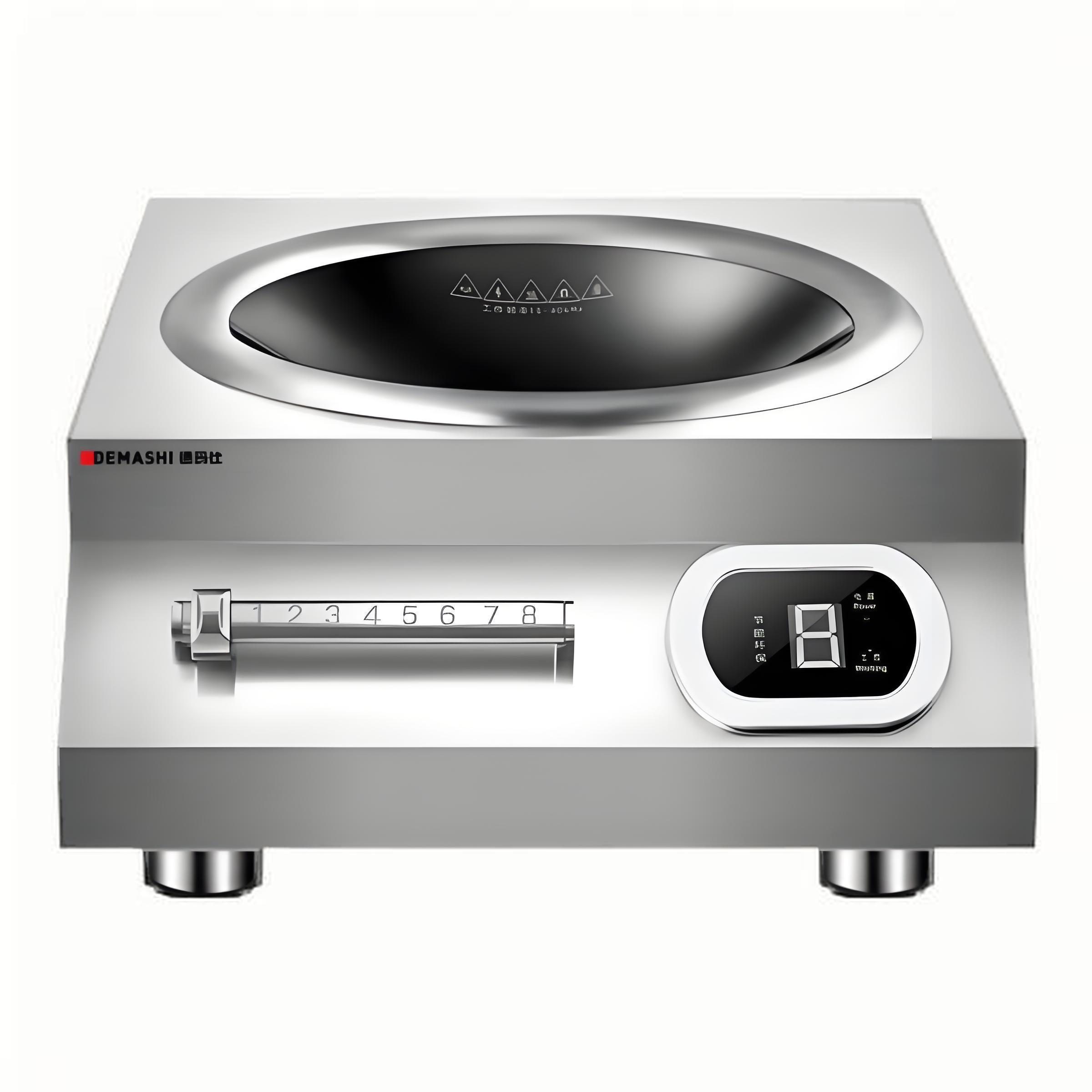
5. How to Make Commercial Induction Cookers More Electricity-Efficient in Restaurants
Although commercial induction cookers inherently have the advantage of saving electricity, restaurants can also adopt some methods to make them even more electricity-efficient.
(1) Reasonable Planning of Kitchen Layout
The layout of the kitchen can affect the operating efficiency of commercial induction cookers. The placement of stoves should be reasonable to avoid mutual interference between stoves that affects the heating effect. At the same time, sufficient space should be ensured around the stoves to facilitate chefs’ operations and ventilation and heat dissipation. The ventilation system is also very important. Good ventilation can timely carry away the heat generated by the stoves, reduce the kitchen temperature, and reduce the energy consumption of air conditioning and other equipment.
(2) Training Chefs
Chefs are the users of commercial induction cookers, and their operating skills and energy-saving awareness directly affect the electricity-saving effect of the induction cookers. Restaurants should regularly train chefs to let them understand the working principle and energy-saving tips of commercial induction cookers, such as reasonably adjusting the firepower and controlling the cooking time. At the same time, an energy-saving assessment mechanism should be established to reward chefs with excellent energy-saving performance and improve their enthusiasm for energy conservation.
(3) Choosing the Right Commercial Induction Cooker
There are numerous brands and models of commercial induction cookers on the market. When choosing, restaurants should select according to their actual needs. Power selection is important. The power of the induction cooker should be chosen based on the restaurant’s scale, dish types, and meal preparation volume. If the power is too high, it will cause energy waste. If the power is too low, it may not meet the cooking requirements. Quality and performance should also be considered. It is necessary to choose induction cookers with reliable quality and stable performance to avoid frequent malfunctions that affect normal use and increase maintenance costs.
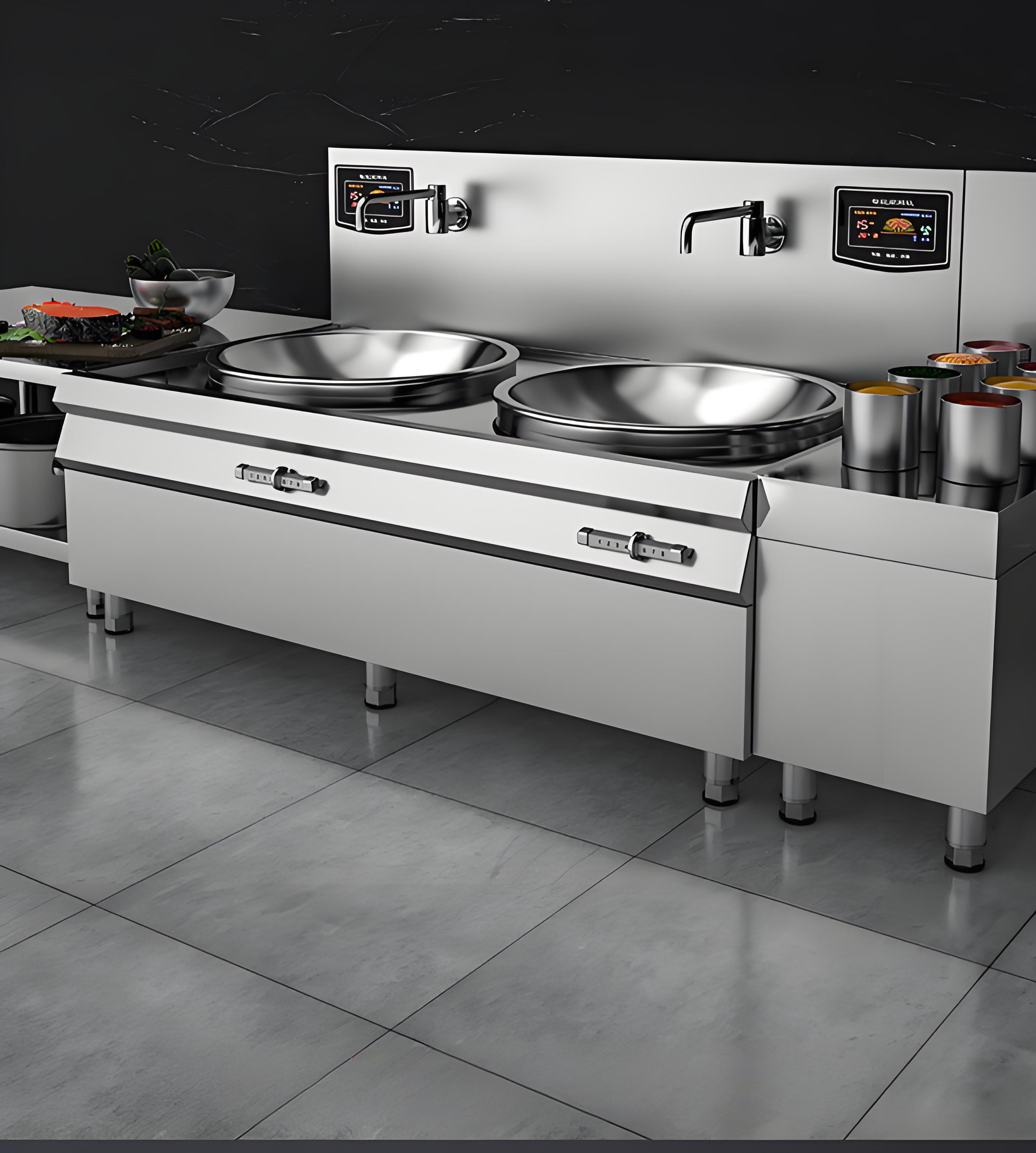
6. Summary
In summary, in most cases, restaurants can save electricity by using commercial induction cookers. They have advantages such as high thermal efficiency and fast heating speed. Compared with traditional gas stoves and resistance wire stoves, they have obvious advantages in terms of energy consumption. However, to maximize the electricity-saving effect of commercial induction cookers, attention should also be paid to the choice of cookware, the cultivation of cooking habits, and equipment maintenance. At the same time, restaurants can further improve the electricity-saving effect by reasonably planning the kitchen layout, training chefs, and choosing appropriate commercial induction cookers.
In today’s increasingly competitive catering industry, cost control is the key to the survival and development of restaurants. As an energy-efficient cooking device, commercial induction cookers are worth considering and promoting by restaurant owners. I hope today’s sharing can be helpful to you, enabling restaurants to reduce energy costs and improve economic benefits while ensuring the quality of dishes.
Related Q&A
Q: Does a higher power of a commercial induction cooker mean higher electricity consumption?
A: Not necessarily. The power of a commercial induction cooker only indicates the amount of heat it can generate per unit of time, but the actual electricity consumption also depends on the usage time and heating efficiency. If a restaurant has a large meal preparation volume and needs to quickly heat a large amount of food, choosing an induction cooker with higher power may be more appropriate. Although the power of a single device is high, due to the fast heating speed, the overall usage time may be shortened, and it may not necessarily consume more electricity than an induction cooker with lower power but longer usage time. Moreover, if a high-power induction cooker is paired with appropriate cookware and reasonable cooking methods, with high thermal efficiency, it can also save energy to a certain extent.
Q: Are commercial induction cookers suitable for all types of restaurants?
A: Commercial induction cookers are suitable for most types of restaurants, but there are also some special cases to consider. For some restaurants that focus on open-fire cooking specialty dishes, such as those that require charcoal grilling or high-heat stir-frying, commercial induction cookers may not fully meet their cooking needs. However, for Chinese restaurants, fast-food restaurants, snack bars, and other restaurants that mainly use cooking methods such as stir-frying, boiling, stewing, and frying, commercial induction cookers are a very suitable choice. They have advantages such as fast heating speed, precise temperature control, and being safe and hygienic, which can meet the daily cooking needs of restaurants.
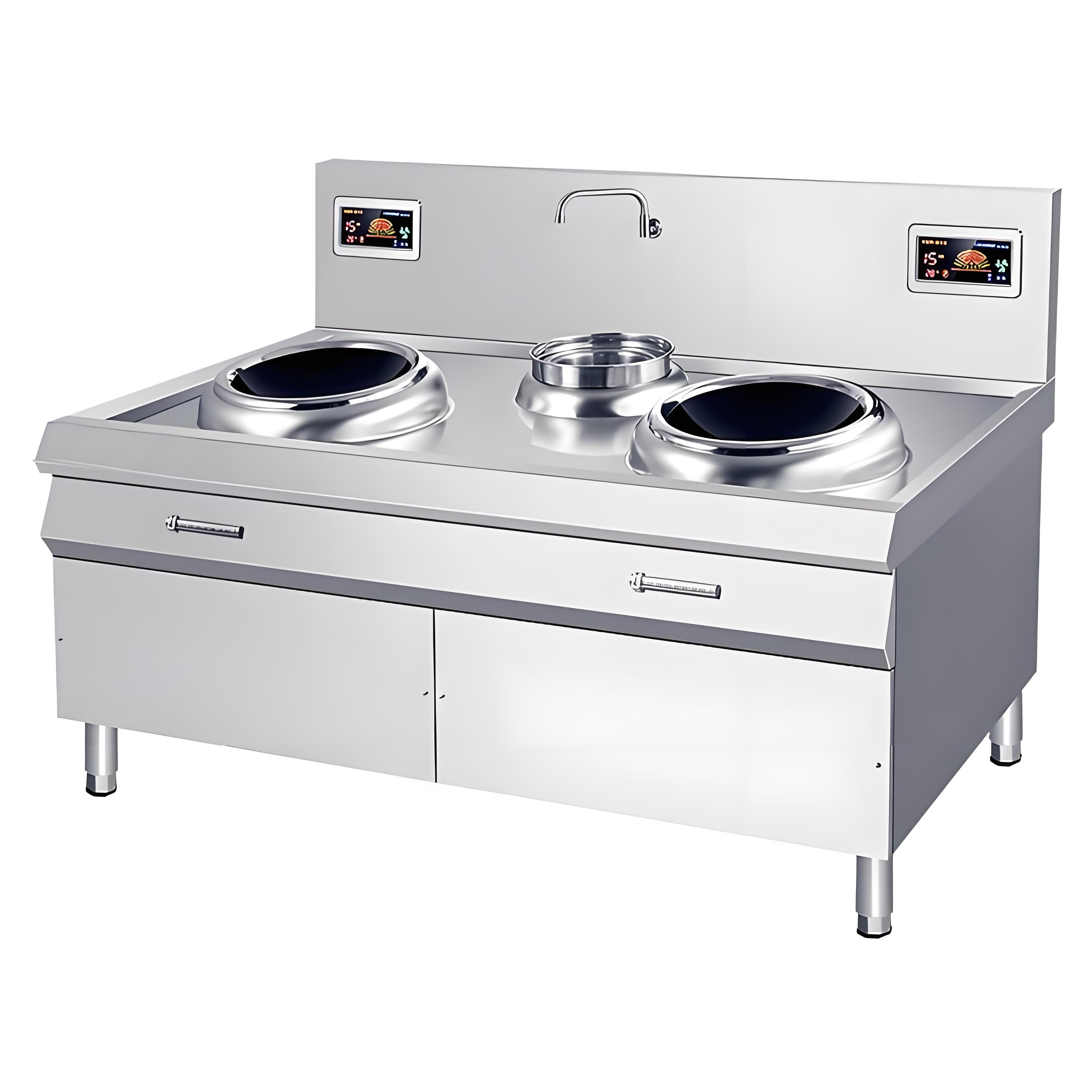
Q: What is the general service life of a commercial induction cooker?
A: The service life of a commercial induction cooker is affected by multiple factors. Generally speaking, under normal use and regular maintenance, its service life can reach 5 – 8 years or even longer. However, if the usage environment is harsh, such as high temperature and high humidity in the kitchen, or if it is used improperly, such as frequently running at overload or using inappropriate cookware, the service life of the induction cooker will be shortened. In addition, the quality and brand of the induction cooker will also affect its service life. Choosing products with reliable quality and well-known brands will generally have a longer service life.
Q: Is the maintenance cost of a commercial induction cooker high?
A: The maintenance cost of a commercial induction cooker is relatively low. Compared with gas stoves, it does not need to regularly replace components such as gas pipelines and valves. Compared with resistance wire stoves, the resistance wire in resistance wire stoves is prone to damage and needs to be replaced frequently, while the main components of commercial induction cookers, such as coils and capacitors, have a longer service life. Daily maintenance mainly involves regularly cleaning the cooktop and internal components and checking whether the wiring connections are loose. These maintenance tasks are relatively simple and the cost is not high. However, if the induction cooker malfunctions and needs to be repaired, there may be certain costs. But as long as high-quality products are chosen and regular maintenance is carried out, the probability of malfunctions will be greatly reduced.
Q: Can the heating temperature of a commercial induction cooker meet the cooking needs of a restaurant?
A: The heating temperature of a commercial induction cooker can fully meet the cooking needs of a restaurant. Modern commercial induction cookers generally have multiple firepower adjustment functions and a wide temperature range, from low-temperature slow cooking to high-temperature stir-frying. For dishes that require high-temperature cooking, such as stir-fried vegetables and stir-fried meat dishes, commercial induction cookers can quickly heat the cookware to the required temperature, enabling rapid stir-frying and ensuring the taste and color of the dishes. For dishes that require low-temperature slow cooking, such as stews and porridges, the firepower can also be reduced to maintain a stable temperature for long-term cooking.
